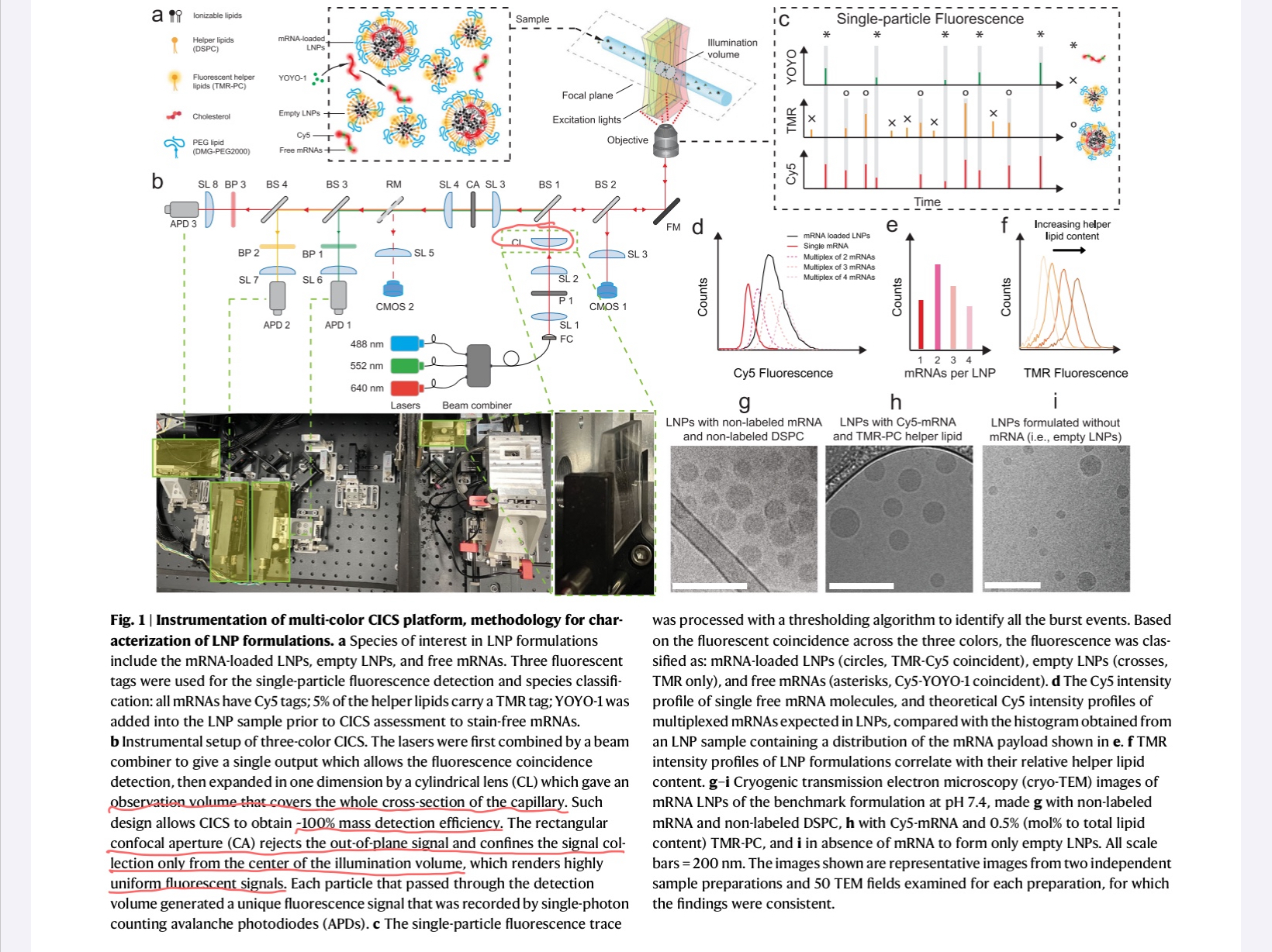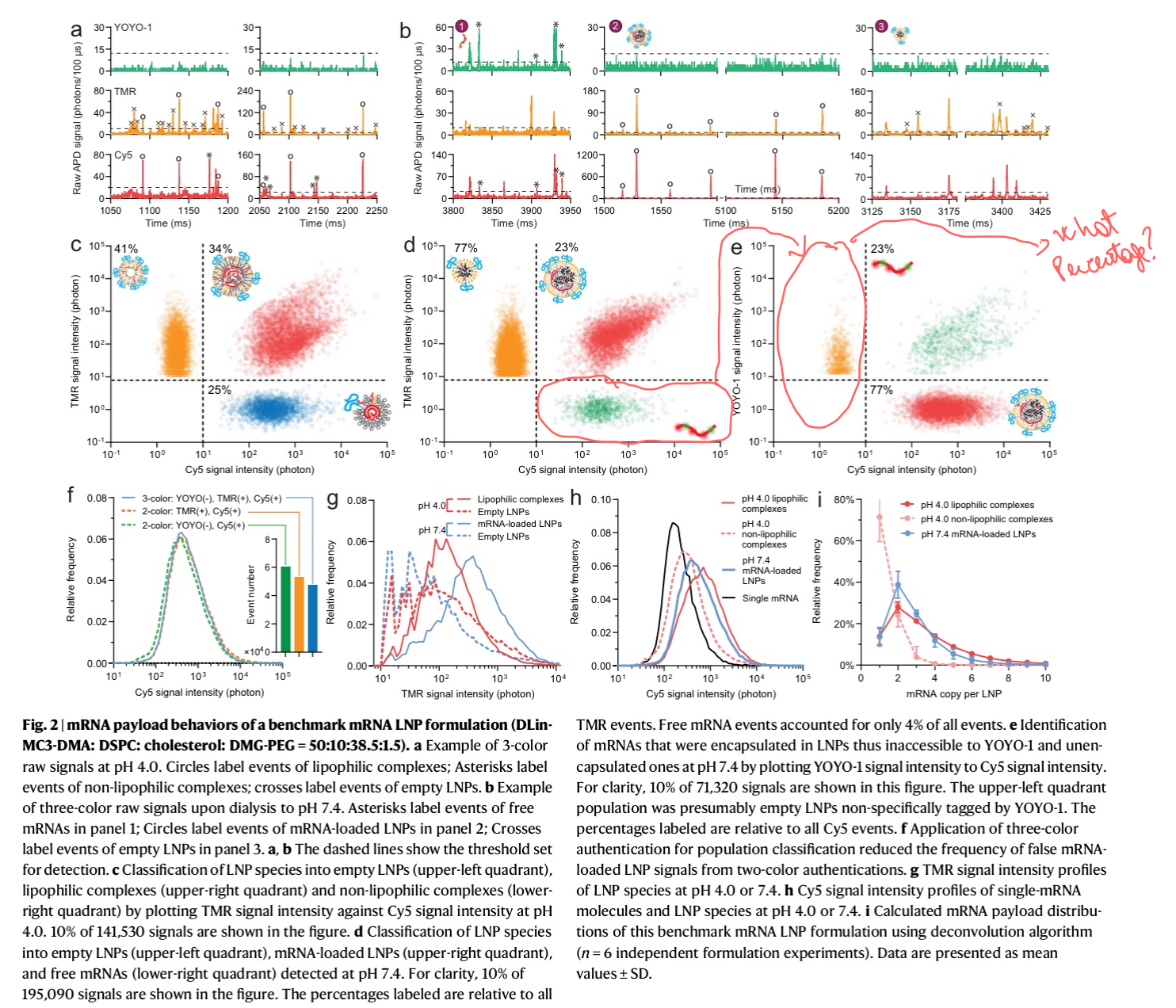Literature/202405110829 cytometer to measure full empty ratio of lnp
- Source: [[@li2022aPayload distribution and capacity of mRNA lipid nanoparticles]]
- Tags: #lipid-nano-particle #full-empty-ratio
This paper implements a flow cytometer inside a capillary. I am not completely sure about the advantages of their approach compared to any other tool, such as nanoFCM.
The capillary is a Molex glass capillary with a $10\mu m$ inner diameter. They create a light sheet to illuminate the entire cross section but, presumably, to keep intensity relatively high. They use 3 colors ($488nm$, $532nm$ and $640nm$). As far as I can tell there is no scattering, just fluorescence. The cameras are used for alignment, not for acquisition.
 There is some discussion about aligning the capillary to the detectors, but I am still missing a discussion on how they compensate the planar geometry while using point detectors. Even they claim using a rectangular aperture to clean up the background, but there is no secondary cylindrical lens.
There is some discussion about aligning the capillary to the detectors, but I am still missing a discussion on how they compensate the planar geometry while using point detectors. Even they claim using a rectangular aperture to clean up the background, but there is no secondary cylindrical lens.
The rest of the paper is mostly a discussion on specific samples and the distribution of mRNA on each lipid nano particle. The equation they derive is the following:
I think all this discussion is rather naïve, since the only thing it gets is that the way of measuring the number of RNA molecules in a particle is a direct multiplication by the intensity given by a single RNA molecule.
There's just a slight complication since intensities themselves forma distribution and not a single value, but the fact they don't have an experimental basis (they neglect any effects in having dual fluorophores, self-quenching, etc.)

The data in the paper looks exactly like it would look like in a flow-cytometer experiment, but without scattering (using scattering instead of fluorescence).
The important conclusion of the paper is that 80% of the LNP's are empty, even if they were using "the gold standard" of mRNA in LNP's.
Tech Specs (at least some)
- Throughput: 3000~5000 events/minute
- Excitation: $488\,nm$, $552\,nm$, $647\,nm$
- Molex Capillary (Polymicro, I assume), $10\mu m$ in diameter, $50\,cm$ in length.
- No mention to index-matching the capillary to a flat substrate (but they mention a coverslip supporting it)
Note
The paper goes as far as describing a fitting procedure that minimizes $\chi^2$ in the distribution of intensities.
